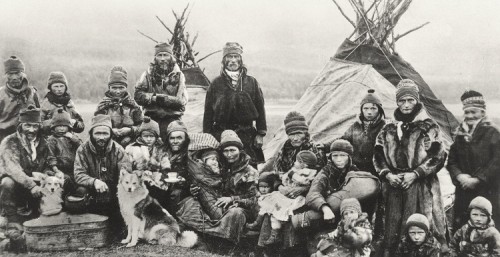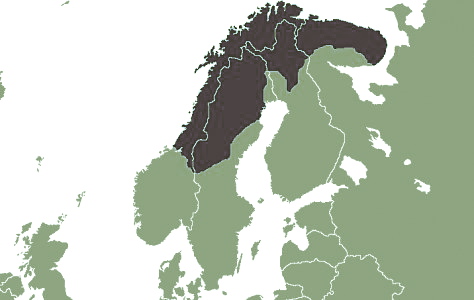The Sámi

(Lapland Sami pictured sometime between 1900 to 1920)
The Sámi people are the indigenous people of the Arctic from the region Sápmi, in what is now known as Norway, Sweden, Finland and the Kola Peninsula in Russia. They are the European Union’s only remaining indigenous people, who have lived in Lapland before any national borders were established and their history dates back to the beginning of time.

(The area of Sápmi)
The Sámi in Finland
Often when people talk about the Sámi, they are referring to all Sámi irrespective of their nationality created from modern history of migrations and wars that marked national borders. But even discussing the Sámi as one people, there are different types of Sami, depending on their place of birth and how they live. Moreover, their rights and their general situation differ considerably depending on the country in which they presently reside.
In Finland, the Sámi were recognized as indigenous people in the Finnish Constitution of 1995. Since then, the Sámi have had the right to maintain and develop their language and culture and their traditional way of life. Under Finnish law, the Sámi have the right to be cared for in their own language in official business, and since 1996, the Sámi have had a constitutional self-government over their language and culture in their varying countries of origin. Approximately 9,000 Sámi currently live in Finland and the most common concerns regarding indigenous rights today in Finland usually revolve around land rights and language issues.
The Sámi population in Finland live in, and around, the municipalities of Enontekiö, Utsjoki and Inari, and in the village of Vuotso in the northern part of Sodankylä municipality. The governmental centre for the Finnish Sámi is Inari, as it is home to the Sámi Parliament, Sámi Radio, Sámi Educational Institute, and the Sámi Culture Centre Sajos.
In Finland, the Sámi were recognized as indigenous people in the Finnish Constitution of 1995. Since then, the Sámi have had the right to maintain and develop their language and culture and their traditional way of life. Under Finnish law, the Sámi have the right to be cared for in their own language in official business, and since 1996, the Sámi have had a constitutional self-government over their language and culture in their varying countries of origin. Approximately 9,000 Sámi currently live in Finland and the most common concerns regarding indigenous rights today in Finland usually revolve around land rights and language issues.
The Sámi population in Finland live in, and around, the municipalities of Enontekiö, Utsjoki and Inari, and in the village of Vuotso in the northern part of Sodankylä municipality. The governmental centre for the Finnish Sámi is Inari, as it is home to the Sámi Parliament, Sámi Radio, Sámi Educational Institute, and the Sámi Culture Centre Sajos.